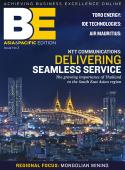While companies have responded to globalization with admirable internal initiatives, says Jim Lawton, the real business of supply management happens outside your own four walls. Whenever an actor or musician makes it to the top of his game and debuts in a world-class venue, there are always going to be surprises. Performing at the Met is never the same as performing on a local or regional stage. But fortunately in the performing arts world, outstanding talent typically finds a strong group of advisors such as agents, mentors, and assistants to help guide the journey, making the transition onto the global stage easier than it would otherwise be.In business, that is not always the case. Quite often, people who make it into the limelight do not have the same support system. The rise of supplier management in the past decade is a perfect example. No one disputes that the procurement and supply chain function inside companies across industries has taken on a far more strategic role. But despite this riseÔÇöeven with the introduction of new business processes and programs, skills and staff development initiatives, and new technology and systemsÔÇöfew supply management organizations are equipped with the global insight necessary to operate at a world-class level on a new stage.ThatÔÇÖs because for most organizations, the largest supply management challenges lies with what happens outside of their four walls, not within. Despite this, virtually all of the processes, people, and systems investments organizations have made have been focused internally. But as company supply chains continue to extend and as the pace of change accelerates across categories, countries and industries, it is global supplier insight that will provide the competitive advantage that companies need to thrive.Global supplier insight can help companies make better global sourcing decisions by helping find and qualify the right set of suppliers and by ensuring that the information is accurate. From regional supplier directories to detailed and current performance, risk and capability intelligence, global supplier insight can become as indispensable to sourcing and supply management as a stage is to an actor. It can also help organizations understand on a total landed cost basisÔÇöquantifying price, performance, and riskÔÇöthe difference between regional suppliers and those from emerging markets such as Mexico and China. And once an organization selects the right set of global suppliers, external insight and connectivity solutions can help reduce ongoing procurement costs by alleviating the need for direct IT involvement and ongoing management.In todayÔÇÖs market, identifying the right source of global suppliers is critical. But if suppliers cannot meet performance, quality, and other requirements on an ongoing basis, then the best, validated decision or cost model will be for naught. Consider how in 2004, according to Industry Week, John Deere spent nearly $340 million on warranty claims that were due to supplier part defects. Around the same time, Sony ElectronicsÔÇÖ brand was hurt on a global basisÔÇönot to mention their bottom lineÔÇöas a chip failure impacted a number of their cameras and handheld computing products after they were already in customersÔÇÖ hands. The upshot of these examples is that organizations are beginning to use insight into global supplier performance to proactively monitor their supply base and take action before it is too late.All supply management organizations agree that supplier quality and performance are essential. But ongoing supplier financial and operational viability is of even greater concern. The challenge of monitoring supply risk is that it involves looking across all of a companyÔÇÖs suppliersÔÇöeven smaller ones which might not appear overly strategic. The ramifications of not taking into account supply risk can be significant. When Land Rover (a division of Ford) ignored the warning signals of a critical chassis supplier for its best selling Discovery SUV model, it was ultimately forced to purchase a supplier to avoid shutting down its own production for an indefinite period. Other companies have not been so lucky. Both Saturn and VW plants have sat idle in recent years as shutdowns/strikes at smaller suppliers halted production lines.Fortunately, some organizations have taken the initiative in deploying supplier management solutions that drive greater insight and context. One diversified manufacturing company leveraged a combination of internal and external insight to measure ongoing performance to more effectively gauge which suppliers would most benefit from development programs. The results of the program speak for themselves (with some unexpected side benefits as well). For example, quality improved nine percent over a six month period when suppliers knew that they were being monitored. And quality improved by 20 percent after suppliers completed self-assessments based on lean-manufacturing principles (this number rose, in fact, to 26 percent for suppliers who also participated in development activities).By nature, global supplier insight comes from outside of a companyÔÇÖs firewall. But to be effective, it must come from a trusted global source that is capable of providing up-to-the-minute supply intelligence to help organizations make the best possible decisions. We believe that companies need global supplier insight and content that focuses on three areas to maximize their supply management results. These are:1) Supplier performance and quality management.2) Supply risk management.3) Supplier content and connectivity.To provide insight and connectivity into these three areas, global supplier insight solutions also need to deliver real-time content, analytics, risk management, and supplier enablement capabilities.And these solutions also need to be offered in a platform-agnostic environment, leveraging existing processes, systems and investments. Like Bloomberg financial information which traders and financial managers use to improve their decision making in the capital markets, users must have a choice about whether they receive this type of content on their own desktop or through a specific application or even a designated terminal.Regardless of industry, maturity, and current capability, global supplier insight solutions can enable procurement organizations to take their efforts and supply management performance to the next level. By empowering individuals with insight and connectivity, they bridge the gap between the internal and external, proving invaluable information for strategic and tactical decisions alike.And perhaps most important, they provide a support system and knowledge infrastructure to help procurement and supply chain professionals deliver results even in an environment where expectations are constantly rising.Jim Lawton is vice president and general manager at Open Ratings, a D&B company









